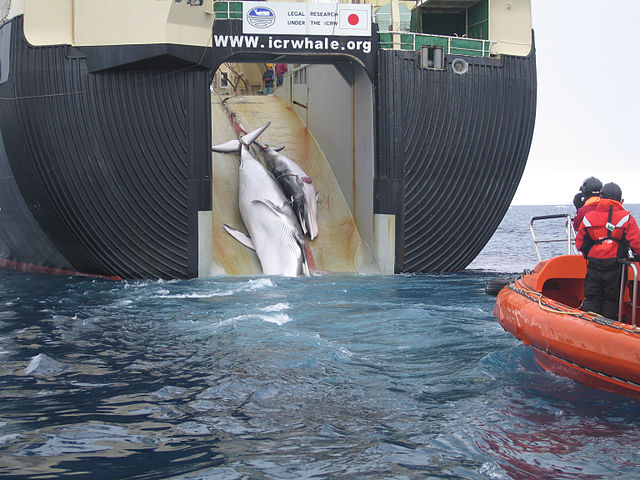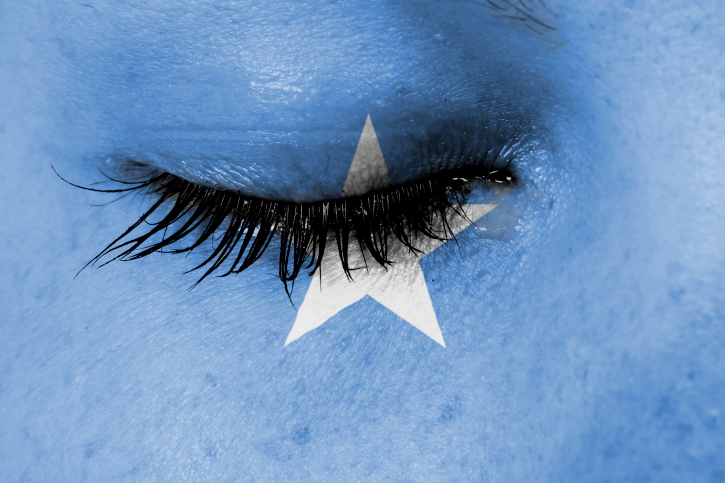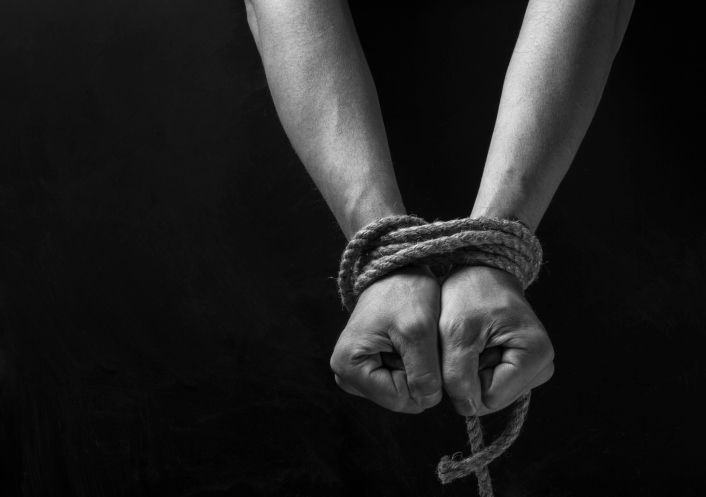 Creepy
Creepy  Creepy
Creepy  Technology
Technology 10 Scientific Breakthroughs of 2025 That’ll Change Everything
 Our World
Our World 10 Ways Icelandic Culture Makes Other Countries Look Boring
 Misconceptions
Misconceptions 10 Common Misconceptions About the Victorian Era
 Mysteries
Mysteries 10 Strange Unexplained Mysteries of 2025
 Miscellaneous
Miscellaneous 10 of History’s Most Bell-Ringing Finishing Moves
 History
History 10 Great Escapes That Ended Right Back in Captivity
 Weird Stuff
Weird Stuff 10 Fascinating Things You Might Not Know About Spiders
 Food
Food 10 Everyday Foods You Didn’t Know Were Invented by the U.S. Military
 History
History 10 Odd Things Colonial Americans Kept at Home
 Creepy
Creepy 10 More Representations of Death from Myth, Legend, and Folktale
 Technology
Technology 10 Scientific Breakthroughs of 2025 That’ll Change Everything
 Our World
Our World 10 Ways Icelandic Culture Makes Other Countries Look Boring
Who's Behind Listverse?

Jamie Frater
Head Editor
Jamie founded Listverse due to an insatiable desire to share fascinating, obscure, and bizarre facts. He has been a guest speaker on numerous national radio and television stations and is a five time published author.
More About Us Misconceptions
Misconceptions 10 Common Misconceptions About the Victorian Era
 Mysteries
Mysteries 10 Strange Unexplained Mysteries of 2025
 Miscellaneous
Miscellaneous 10 of History’s Most Bell-Ringing Finishing Moves
 History
History 10 Great Escapes That Ended Right Back in Captivity
 Weird Stuff
Weird Stuff 10 Fascinating Things You Might Not Know About Spiders
 Food
Food 10 Everyday Foods You Didn’t Know Were Invented by the U.S. Military
 History
History 10 Odd Things Colonial Americans Kept at Home
10 Countries That Are Number One For Terrible Things
Brazil takes pride in its five World Cup trophies, while Denmark relishes the title of “World’s Happiest Country.” But not all records are positive. Here are 10 you really wouldn’t want your country to hold.
10Austria
Most Smokers

As most people know by this point, smoking is essentially an expensive cancer lottery. But apparently Austria didn’t get the memo, since it holds the record for the highest proportion of smokers—around 36.3 percent of the population. With over a third of Austrians regularly lighting up, the wealthy European nation can claim the highest smoking rate in the world. An estimated 60 percent of the 20–50 age group—some 2.5 million people—admitted to smoking regularly or semi-regularly in 2010. And things don’t seem to be improving much—41 percent of the 15–20 age group are also regular smokers, while a further 8 percent admitted to sneaking the occasional cigarette.
The country’s nicotine fixation has created friction with its neighbors. In 2009, Austria belatedly enforced an EU anti-smoking directive requiring large restaurants and bars to set aside at least 50 percent of their seating area for non-smokers. The move caused widespread outrage, with many business owners saying they would openly flout the law for fear of losing their customers. In 2010, only 19 percent of Austrians said they would support a full ban on smoking in restaurants and other enclosed spaces, leaving the country’s 3.5 million smokers free to continue their habit for the foreseeable future.
9Belarus
Heaviest Drinkers

Alcoholism is heartbreaking on an individual level, but things can get even worse when a whole country seems to have a drinking problem. According to the World Health Organization (WHO), the average Belarusian consumes 17.5 liters (3.9 gal) of pure alcohol every year, almost three times the global average of 6.2 liters (1.4 gal). If that doesn’t sound bad enough, the average Belarusian male consumes 27.5 liters (6 gal) per year. Of the country’s total alcohol consumption, spirits accounted for 46.6 percent, while beer and wine made up a further 22.5 percent. A disturbingly high 30.9 percent of alcohol consumed was simply listed as “other”—probably referring to the discount fruit wines and homemade vodka beloved by the nation’s 170,000 recorded alcoholics.
Belarus’s government has disputed the WHO report, claiming that the actual figures are much lower. But the government itself came in for criticism when it emerged that the lower average they provided included young children and newborn infants, who tend not to be heavy drinkers. Thankfully, the government has instituted a strong anti-alcohol program, including heavy fines for drunk driving and a ban on homemade fruit wines. There are even plans to raise the drinking age from 18 to 21. Drink prices have also risen considerably, with the cost of vodka doubling over the last few years. However, liquor seems to be ingrained in the culture of Eastern Europe—according to the WHO report, the top five alcohol-consuming nations all hail from the region.
8South Korea
Most Cosmetic Surgery

In a world where looks are seemingly everything, it’s not surprising that some people feel enormous pressure to conform to society’s standard of beauty—even if that means undergoing expensive, painful, and potentially dangerous surgery. Things are particularly bad in South Korea, where plastic surgery is practically an everyday occurrence. An estimated one out of every five South Korean women has had some cosmetic work, four times higher than the rate among American women. The country’s plastic surgeons have developed an international reputation—around 7.5 million people have traveled to Seoul to have work done, including many members of the Korean diaspora.
Why does South Korea have such an obsession with surgery? No one really knows, although anecdotal evidence suggests that Korean women feel heavily judged on their looks. Popular surgeries include procedures to enlarge eyes and reshape noses and jaws. As one plastic surgery patient told ABC News: “I think everyone is trying to delete this Koreanness. In Korea, you go down the streets, you see this girl. And you walk down the street, and you see that girl again. It actually is a different person.”
7Honduras
Highest Deforestation Rate

Deforestation is a global problem, but some countries have it worse than others—and Honduras just might have it worst of all. According to the Global Forest Resources Assessment Report, the Central American country lost the fourth highest percentage of its forests between 1995 and 2005, behind the Comoros, Burundi, and Togo. However, the total forest cleared in Honduras dwarfed the losses in the other three—despite its relatively small size, Honduras was actually in the top 20 countries for total forest lost. When the two measures are taken into account, it seems like Honduras might well have the worst deforestation problem in the world.
An estimated 70 percent of the Honduran population lives in severe poverty, and firewood is often their only source of cooking fuel. Local coffee farmers don’t always realize the effects of runoffs from chemicals used in the pulping process. There are more surprising reasons as well—an increase in drug smuggling through the country has seen deforestation rates skyrocket. Clearing forests for agriculture provides an easy way for traffickers to launder their profits, and they usually have the muscle to ignore conservation groups and muscle indigenous groups off their land. Thanks to the “narco-effect,” large-scale deforestation quadrupled in Honduras between 2007 and 2011.
6Chad
Lowest Life Expectancy

With a life expectancy of only 49 years, Chad is officially the worst country to be born in. Malnutrition is the largest factor in the country’s shockingly short average lifespan—as a desert nation, Chad is extremely susceptible to drought and other natural disasters. To make matters worse, the recent conflict in neighboring Sudan has created a devastating refugee crisis, with thousands streaming across the border in search of safety. Chad has also suffered from decades of civil war and a brutal conflict with the Libyan regime of Muammar Gadhafi.
As if that wasn’t bad enough, Chad is in the middle of an HIV/AIDS epidemic. An estimated 3.4 percent of the adult population are living with the disease and over 120,000 children have lost their parents because of it. Water is an increasingly rare commodity—only around 4 percent of the rural population have a safe source of clean drinking water, leading to regular outbreaks of diarrhea, cholera, and typhoid fever. In a country where there is only one doctor for every 38,000 people, these diseases are heartrendingly deadly.
5Germany
Most Prostitutes In Europe

While not as highly prized as the Champions League or the Eurovision Song Contest, Germany can claim to be champions of Europe when it comes to the number of prostitutes. By some estimates, Germany has as many as 300,000 sex workers, around half of them foreign-born. Since it legalized prostitution in 2002, the country has been referred to as a giant “sex supermarket,” with one Floridian flying there at least three times a year to take advantage of the discount prices. There are an estimated 500 brothels in Berlin alone, with over 3,000 in the country as a whole, and the industry reputedly generates around $20 billion a year.
As you would expect, Germany’s prostitution boom has a tragic dark side. Many foreign-born sex workers were trafficked into the country with promises of work, before being forced into the industry. Brothel owners take the lion’s share of the profits, with many workers paid a pittance. By some estimates, as many as 90 percent of the country’s prostitutes may have been forced into an industry they would have preferred to avoid. As one Member of Parliament observed: “At the time it was thought that legalizing prostitution would improve their situation. But that totally failed. We now see that meaning well does not mean doing well.”
4Papua New Guinea
Cannibalism

Cannibalism has been rare since prehistory and extinct as a cultural practice since the 19th century. With one notable exception, that is. The island of New Guinea is home to wild forests, undiscovered animals, and isolated tribes cut off from the rest of the world. Some of these groups are believed to still practice ritual cannibalism. The Korowai people, for example, are said to eat the flesh of suspected male witches known as khakhua. The Korowai have little understanding of modern medicine, and often attribute diseases to a khakhua using magic to consume their victim from the inside out. Since the khakhua practice cannibalism, Korowai justice dictates that the same should happen to them as punishment. Suspected khakhua are usually shot with arrows before being butchered and eaten. The practice is believed to have died out among many Korowai groups, but likely persists in some isolated communities.
A less violent version of cannibalism was responsible for a devastating outbreak of disease during the 1950s. The Fore people of Papua New Guinea had long practiced mortuary cannibalism—ritually consuming the bodies of recently deceased tribe members. During the ‘50s and ‘60s, a disease known as kuru killed around 1,000 members of the tribe. Kuru, meaning “the shaking death,” was eventually revealed to be a neurodegenerative disease spread by eating infected human brains.
3Japan
Animal Cruelty

There isn’t a single easy way to estimate which country has the worst record when it comes to animal cruelty, but Japan’s terrible track record compared to other developed countries certainly makes it a strong candidate. Infamously, Japan has continued to hunt whales and dolphins on an industrial scale, insisting its fleet is engaged in “scientific research” to get around international restrictions on whaling. Since demand for whale meat has plummeted over the last 50 years, the industry is unprofitable, yet the Japanese government continues to subsidize it to the tune of around $10 million a year. Excess whale meat is often fed to schoolchildren under the guise of educating them “about the kind of school lunches Japan had in the past.” The annual Taiji dolphin hunt sees around 2,500 dolphins herded into a cove by noisemaking boats and trapped there overnight. In the morning, the dolphins are stabbed to death with harpoons, hooks, and knives, turning the water red with blood.
Things aren’t ideal on land either. The 1973 Welfare and Management of Animals Act states that if an owner doesn’t come to adopt a stray dog or cat, it must be “disposed of” properly. Unfortunately, this is usually carried out by gas, which can often take an excruciating 30 minutes to course through the animal’s body. But things aren’t hopeless—a pound in Japan is taking steps to save many pets’ lives. The Kumamoto City Animal Welfare Center is beginning to ask why people bring in their dogs and cats to be disposed of, and in many cases will try to talk them out of it. Amazingly, most people will change their minds and decide to continue taking care of the animals. In 2002, the center was putting down almost 400 animals a year. In all of 2009, they put down a total of seven.
2Somalia
Most Child Soldiers

The use of child soldiers is almost universally condemned, but persists in many conflicts around the world. The problem might be worst in Somalia, where militant Islamist groups have taken to recruiting children as young as 10 to use as cannon fodder in their fight against government forces. The notorious Al-Shabab group, widely considered to be among the worst offenders, has been accused of using truckloads of teenage recruits as a screen for the more experienced fighters. One survivor claimed that out of 100 of his classmates, 98 had been killed almost immediately when Al-Shabab sent them into battle. “The children were cleaned off. The children all died and the bigger soldiers ran away.”
The group will often use children to lure other kids into their trap. One boy was invited to play a game of football, but when he arrived at the field, he and his teammates were captured and sent to a training camp. In one case, a mother got a call from the group themselves and was told not to worry, as they would teach her son all the Islamic principles he would have learned in school. The problem is not limited to the rebel groups—Somalia’s transitional government has also been accused of using child soldiers in its struggle against Al-Shabab.
1Bangladesh
Highest Human Trafficking Rate

Human trafficking is a truly horrible crime, and yet it is more common than you might think. Each year at least 600,000–800,000 people are trafficked over international borders—and some reports estimate the real number to be much, much higher. The victims are forced into indentured servitude, with over half believed to have been trafficked for the purpose of sexual exploitation. Despite the best efforts of global law enforcement, the trade is almost certainly growing.
The situation might be worst in Bangladesh, where an estimated 50,000 women and children are taken abroad each year. Reliable statistics for men are not available, but tens of thousands are believed to have been trafficked abroad for labor in India or the Middle East. It is unknown how many people have been forced into servitude within Bangladesh itself. The traffickers target vulnerable young women with promises of a better life abroad. While the situation has improved, law enforcement was long unwilling or unable to deal with the problem. Between 1999 and 2004, only 53 traffickers were tried in Bangladeshi courts. Just 21 were convicted.








